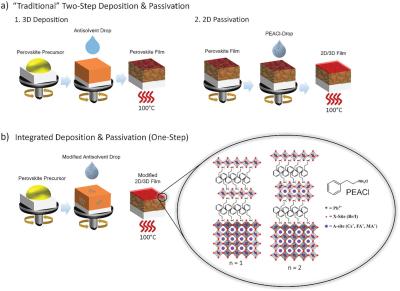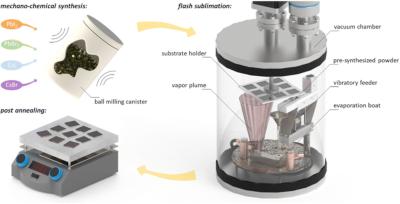Researchers use thiocyanate ions to boost the efficiency of perovskite/organic solar cells
Researchers from Soochow University, Hunan University and Friedrich-Alexander University Erlangen-Nürnberg have incorporated pseudo-halogen thiocyanate (SCN) ions in iodide/bromide mixed halide perovskites and showed that they enhance crystallization and reduce grain boundaries.
While perovskite/organic tandem solar cells could theoretically achieve high efficiency and stability, their performance is hindered by a process known as phase segregation, which degrades the performance of wide-bandgap perovskite cells and adversely affects recombination processes at the tandem solar cells' interconnecting layer. The team devised a strategy to suppress phase segregation in wide-bandgap perovskites, thus boosting the performance and stability of perovskite/organic tandem cells. This strategy entails the use of a pseudo-triple-halide alloy incorporated in mixed halide perovskites based on iodine and bromine.





